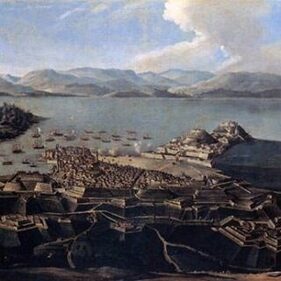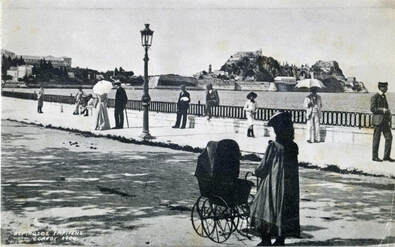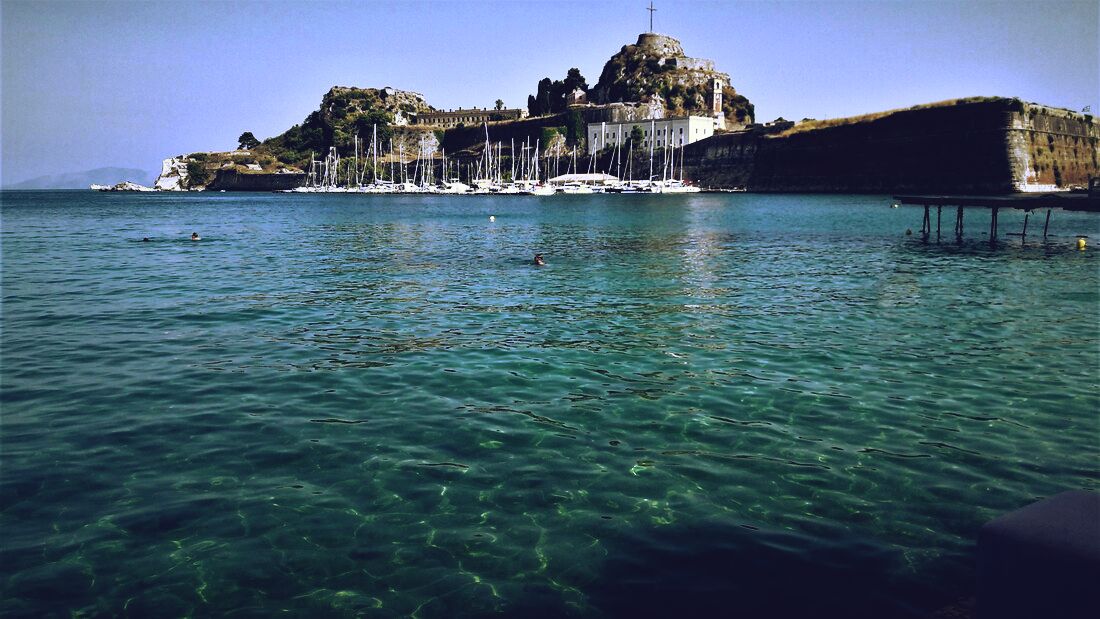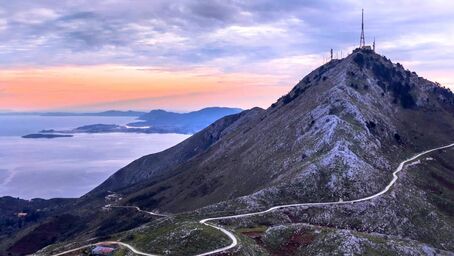|
Kerkyra was inhabited since the Paleolithic Era when it was a part of the mainland and piece of Pindos mountain range.
This elongated island is wide on the North and gets narrower on the South. Its beaches have a total length of 217 km and form several coves and capes. The land is mainly mounty , especially on the North where you will also find picturesque beaches with great views from above such as Paleokastritsa , Logas , Barbati . Two high and well-defined ranges divide the island into three districts, of which the northern is mountainous, the central undulating, and the southern low-lying. The more important of the two ranges, that of Pantokrator (Παντοκράτωρ – the Almighty) stretches east and west from Cape Falacro to Cape Psaromita, and attains its greatest elevation in the summit of the same name. The second range culminates in the mountain of Santa Decca, as it is called by misinterpretation of the Greek designation Άγιοι Δέκα (Hagii Deka) Ten Saints. The whole island, composed as it is of various limestone formations, presents great diversity of surface. Beaches are found in Agios Gordis, the Korission Lagoon, Agios Georgios, Marathia, Kassiopi, Sidari, Palaiokastritsa and many others. Corfu is located near the Kefalonia geological fault formation earthquakes have occurred. Corfu's coastline spans 217 kilometres including capes its highest point is Mount Pantokrator (2,989 ft) and the second Stravoskiadi, at 849 m (2,785 ft). The full extent of capes and promontories take in Agia Aikaterini, Drastis to the north, Lefkimmi and Asprokavos to the southeast, and Megachoro to the south. Two islands are also to be found at a middle point of Gouvia and Corfu Bay, which extends across much of the eastern shore of the island; are known as Lazareto and Ptychia (or Vido). |



